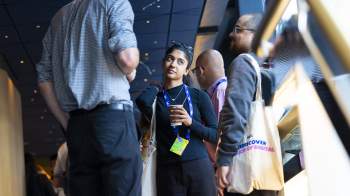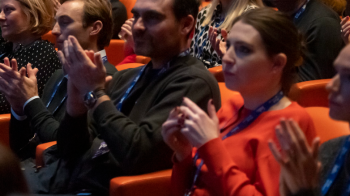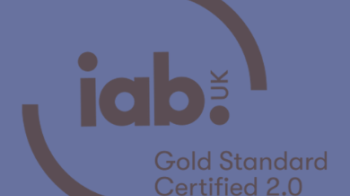Don’t forget that the internet is amazing
James Chandler
The IAB's CMO, James Chandler, reflects on his first week at the IAB which included speaking at Advertising Week Europe and tackling brand safety issues.
I love Advertising Week Europe. It’s our industry ‘on stage’ for a week, with brands, agencies and media owners all coming together to celebrate the very best that advertising has to offer today with a watchful eye on what’s coming next. Invariably, everyone’s story is by default a digital story – be that England Rugby flanker James Haskell talking about real time GPS tracking during games or how Tech City might well end up benefitting from Brexit.
But this week has, in parts, felt less celebratory than usual and more like a close-up examination of some of our industry’s more challenging parts – specifically the subject of brand safety online.
Simply put, paid advertising appearing next to, in front of, between, or around irrelevant or unsuitable content isn’t something new and isn’t an issue reserved only for digital. But of course, with all the brilliant, sophisticated means we have to behaviourally target, bid algorithmically in auctions and deliver real-time dynamic creative online, come some fundamentals. Top of that list being that context remains king. The placement of any ad online should never compromise a brand’s values or in any way detract from the message they’ve paid to put in front of someone.
This week, Google admitted they’d got this wrong and apologised after it became clear that advertising paid for by brands had appeared next to controversial content on YouTube.
It’s important to separate the two issues at play here. One is around Google’s defence of freedom of expression regarding the content that gets uploaded to YouTube and the other is them guaranteeing a brand safe environment for brands across their platforms. I challenge anyone reading this to think of a brand that would ever want their message placed next to hateful, anti-Semitic or extremist content – so as a default, this type of content should not be made available for advertisers to buy.
Google are clearly capable of amazing things, like delivering WiFi to the remotest areas of earth via a network of balloons travelling on the edge of space and having cars navigate our roads driver-free – so for them, putting more rigorous vetting and controls in place to protect brands who are spending on YouTube is by no means an impossible ask, rather it’s an critical one.
Rightly, Google have committed to taking action – specifically giving brands safer content as default, more finely-tuned controls over where their ads run and tougher policies relating to hateful and offensive content. Reassuringly, they have understood the need to move quickly and are doing so.
And of course advertisers always have choice in digital. Based on the objectives of their campaign, their means of measuring success and the guarantees given to them by media partners – brands can be selective as to where their paid-for messages appear. In addition, developments in brand safety technology means the prevention of ads being served around inappropriate content (however this might be defined by brands) can now be proactively stopped, rather than simply reported on afterwards.
Let’s never forget that the internet is amazing. Besides empowering people around the world to do things they could have never thought possible, it’s given advertisers new ways of reaching people that no other media has before. It’s even made traditional media more interactive, intuitive and accountable and remains - for me - the smartest way for brands to reach people and wow them.
Related content
Q&A: A responsible approach to brand safety
Learn moreDespite GARM’s setback, look to Team GB cyclists to keep collaboration on track
Learn moreIAB UK reinforces the Gold Standard with new updates
Learn moreFAQs: Find out more about getting Gold Standard certified
Learn more
Fast forward to 2030 with Futurescape
An in-depth exploration of the attitudes, innovations and media shifts that will shape the years ahead and redefine how we advertise by the turn of the decade



